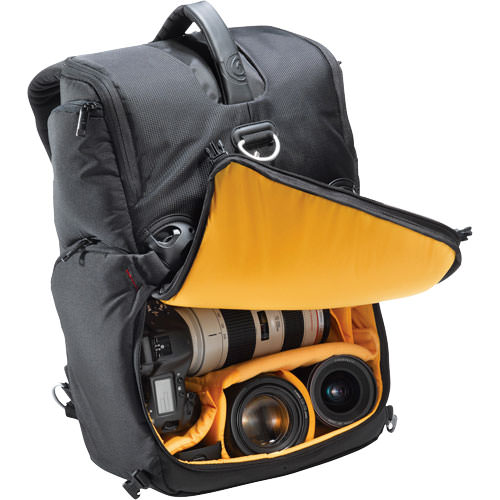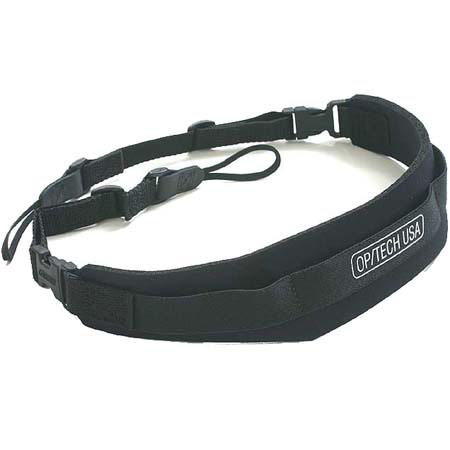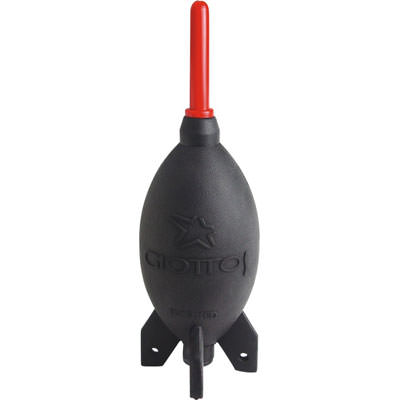Every photographer has a toolbox of camera accessories that are heavily used for photography. While some photographers have a large array of accessories for every type of situation and need, others only buy what they feel is necessity for their photography work. In this article, I will provide some detailed information about what accessories should be in every photographer’s bag – I call it a “must-have” list.
1) A good camera bag
As soon as you buy a camera, you buy a camera bag, because you want to protect your investment and easily transport it between locations. But choosing the right camera bag is not always easy – there are so many different bags out there, that it gets frustratingly difficult to make the right decision. Often times, people end up buying a small camera bag, only to replace it in a couple of months with a different one, realizing that they need more room for their camera and lenses. This happens all the time and it also happened to me! I got my first Nikon D80 DSLR, thinking that I wouldn’t spend a penny more on an already expensive camera. I bought a compact camera bag that fits the camera and a couple of lenses and thought that I was good to go. Eventually, I ended up buying another lens and extra accessories and my bag was too small to accommodate everything. So I had to go and buy another camera bag with more room. Instead of wasting your money like this, you should buy a good camera bag from the get-go. I personally prefer a backpack, but some people like the convenience of using sling-bags and shoulder bags. It is a personal preference and you should definitely try before you buy…a local camera store is a great place to start. My personal favorites are LowePro and Kata bags, specifically LowePro Pro Runner 300 AW and Kata 3 in 1 Sling Backpack.
2) Extra battery
An extra battery is an indispensable accessory that will definitely come in handy, especially when traveling. If you do not already have an extra battery, you should definitely buy one before your next trip or vacation. One more thing – batteries do not last long when you shoot in cold temperatures, so be prepared for a short battery life if you are shooting in freezing conditions.
3) LCD Protector
Although many DSLR cameras come with a plastic protector for the camera LCD, I still highly recommend protecting the rear LCD with a regular screen protector. Sometimes dust gets in between the LCD and the plastic screen protector and scratches the LCD. A DSLR camera with a scratched LCD is not going to have a good resell value, so that’s the first thing you should do to keep it away from scratches. The ZAGGinvisibleSHIELD LCD protectors work great and you can find those at almost any size to fit your LCD. Once you protect it, don’t forget to put the plastic protector back in place, if you have one.
4) Padded neck strap for your DSLR
The neck straps that come with DSLR cameras are very uncomfortable. When you carry a heavy camera+lens combo on your neck, a standard camera strap can leave painful bruises on your neck, after just an hour or two of wearing the camera. Gladly, there are many excellent neck straps available today such as Op/Tech Pro Loop Strap that I cannot live without. It is soft, very comfortable and can easily hold my heavy Nikon D700 + battery pack with a large lens such as Nikon 70-200mm VR II without any problems. Another super-popular camera strap is the RS5 Strap from Black Rapid, so check it out as well.
5) Lens cleaning kit
Dust and dirt in front of the lens element reduces lens contrast, resulting in cloudy-looking images. Therefore, you should always keep lens front and back elements clean at all times. There are plenty of different brands to choose from and any of the optical solutions should work fine. Check out some cleaning kits from Nikon andZeiss.
6) Giottos Rocket Blower
The Giottos Rocket Blower is a miracle when it comes to blowing off dust from your camera gear. It only costs ten bucks, but this is one tool that you will be carrying with you in your camera bag at all times! It helps me keep my lenses clean and it does a really good job blowing off dust from the camera sensor when I’m traveling. Give it a try and you won’t regret it.
7) Sturdy tripod
A good, sturdy tripod is a must-have for low-light, night and landscape photography. Don’t buy cheap plastic tripods that can easily break – you do not want to put your expensive DSLR equipment on a crappy tripod. Always make sure that the tripod you are buying can handle at least twice more weight than your DSLR and lens. I have heard plenty of horror stories about expensive DSLR cameras falling off from crappy tripods! The best tripods are made by Gitzo, but they are expensive (starting from $400 and up). Manfrotto also manufactures very good tripods and you can buy tripod legs and a head separately, or buy a tripod system. Some of the cheapest tripods are by Sunpak (priced under $100) and you can find them even in such stores as Best Buy. I have also heard that the Slik tripods are very good in terms of value and price, such as the Slik 700DX Pro.
8) Remote Shutter Release
Don’t forget to grab a remote shutter release for your DSLR along with the tripod. You can easily cause camera shake on a long lens setup, even if you are using a sturdy tripod. When you work with slow shutter speeds, ever bit of vibration can cause your image to be blurry. A remote shutter release will let you fire your camera without touching it. Many of the entry-level DSLRs have infrared remotes that are very lightweight, compact and best of all – wireless. If you are shooting on a pro-level body, you will most likely have to buy a wired solution. Both Nikon and Canon have a good selection of remote shutter releases and I recommend getting one that supports “bulb” mode (more than 30 seconds exposure) with an exposure lock.
9) Lens UV/Protection Filter
Get used to buying a lens protection filter while buying a lens. If you do not already have one, definitely buy one as soon as possible. Not only do protection filters help protect your lens from accidental damage, but they also make it easier to clean lenses, especially when the front element of the lens sticks out in a round form. Although some photographers claim that filters degrade image quality, I have been shooting with filters for years and have learned that good filters almost do not affect image quality. Just buy good filters such as B+W or Hoya Pro series and forget about what everyone else says.
10) Polarizing Filter
If you are thinking about taking pictures of landscapes and architecture, a polarizing filter is another “must-have” accessory. I wrote an article on how to use a polarizing filter before and I highly recommend to check it out. Basically, a polarizing filter can reduce reflections from objects such as water and glass and can be used to darken the sky and bring out the clouds, making the scene look much more vivid. I do not recommend keeping it on your lens at all times, since a polarizing filter slows your camera down by reducing the amount of light that passes through it.
want to know more:



No comments:
Post a Comment